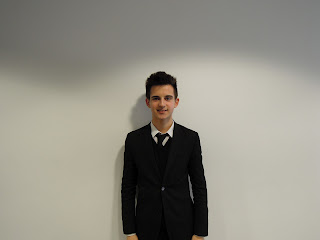MISE-EN-SCENE
What is placed in a scene, or more specifically how individual shots in a film are composed. The content of a shot may include setting, lighting, spatial relationships etc.
PLOT
Sections of story withheld from certain characters, the audience usually resolves it in the end. Plotting encourages interest.
PROTAGONIST
The central / main character of the film.
GENRE
A specific type of film, newspaper, radio or television production. Examples of genre in film are action films, musicals, love stories, westerns, Sci fi, horror and thrillers
DIEGETIC SOUND
Any sound, voice or piece of music that comes from within the world of the narrative.
SOUND
Vibrations in the air or other medium which cause auditory perception. Sound can be analysed because it is meaningful, whereas noise is a random waveform, which contains a mixture of audible frequencies. Issues, which are central to communication theory, such as the contextual use of sound in film, are still relatively neglected.
CROPPING
Removing unwanted areas of a photograph in order to achieve a more aesthetic or balanced composition. Sometimes used to censor or distort the appearance of material regarded as sensitive.
MORAL PANIC
A sudden increase in the concern about the possible ‘effects’ of media products, e.g. ‘video nasties’ in the 1980’s. Also media hype over a given issue e.g. 1990’s ownership of knives and guns.
NARRATIVE
Story telling conventions. A complex term referring to a sequence of events organised into a story with a particular structure.
MONTAGE
A concept from early soviet cinema. Montage is a process of creating meaning through the juxtaposition of individual shots. It has also come to mean the use of rapid cutting from shot to shot, a style adopted by the makers of television commercials.
Edited shots do not have obvious links.
GENRE
A specific type of film, newspaper, radio or television production. Examples of genre in film are action films, musicals, love stories, westerns, Sci fi, horror, documentary and T.V soaps. In audio examples are drive time, news, music radio and radio soaps. In print examples are comics, broadsheets, tabloids and magazines.
AUDIENCE
Who the text is aimed at. The aggregate of individual listeners / viewers thought to receive public forms of communication. Audience is also used to refer to specific social groups, divided by class, sex, age, ethnicity and other characteristics. McQuail and Ien Ang both wrote about audience.
FORMAT
The way the programme is organised
ANGLE
The journalist’s term for the approach, perspective or slant used for a particular story.
SEQUENCE
An ordered series of images.CINEMATOGRAPHY
The photographic / visual look of a film. The technical practices of creating film for public consumption.
STEREOTYPE
Expected characteristics or behaviour based on preconceived ideas. E.g. All women do housework.
PROTAGONIST
The central / main character of the film















